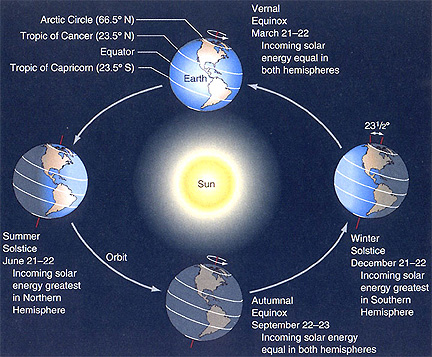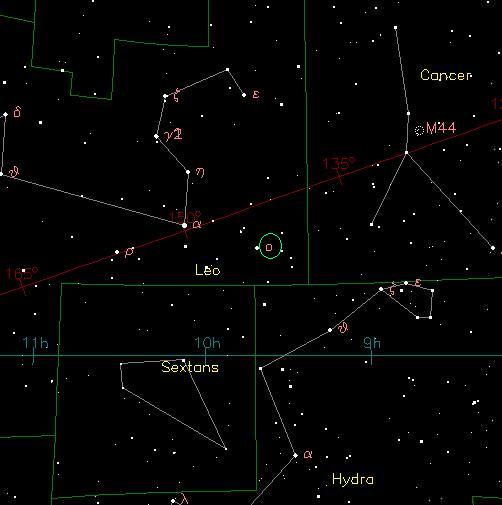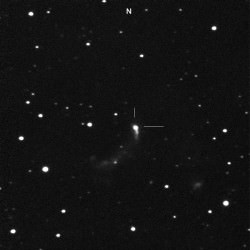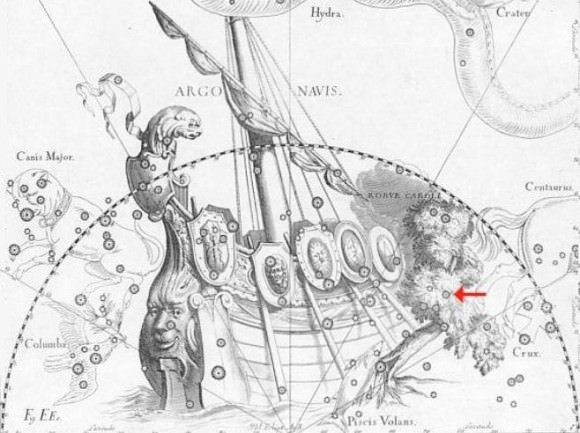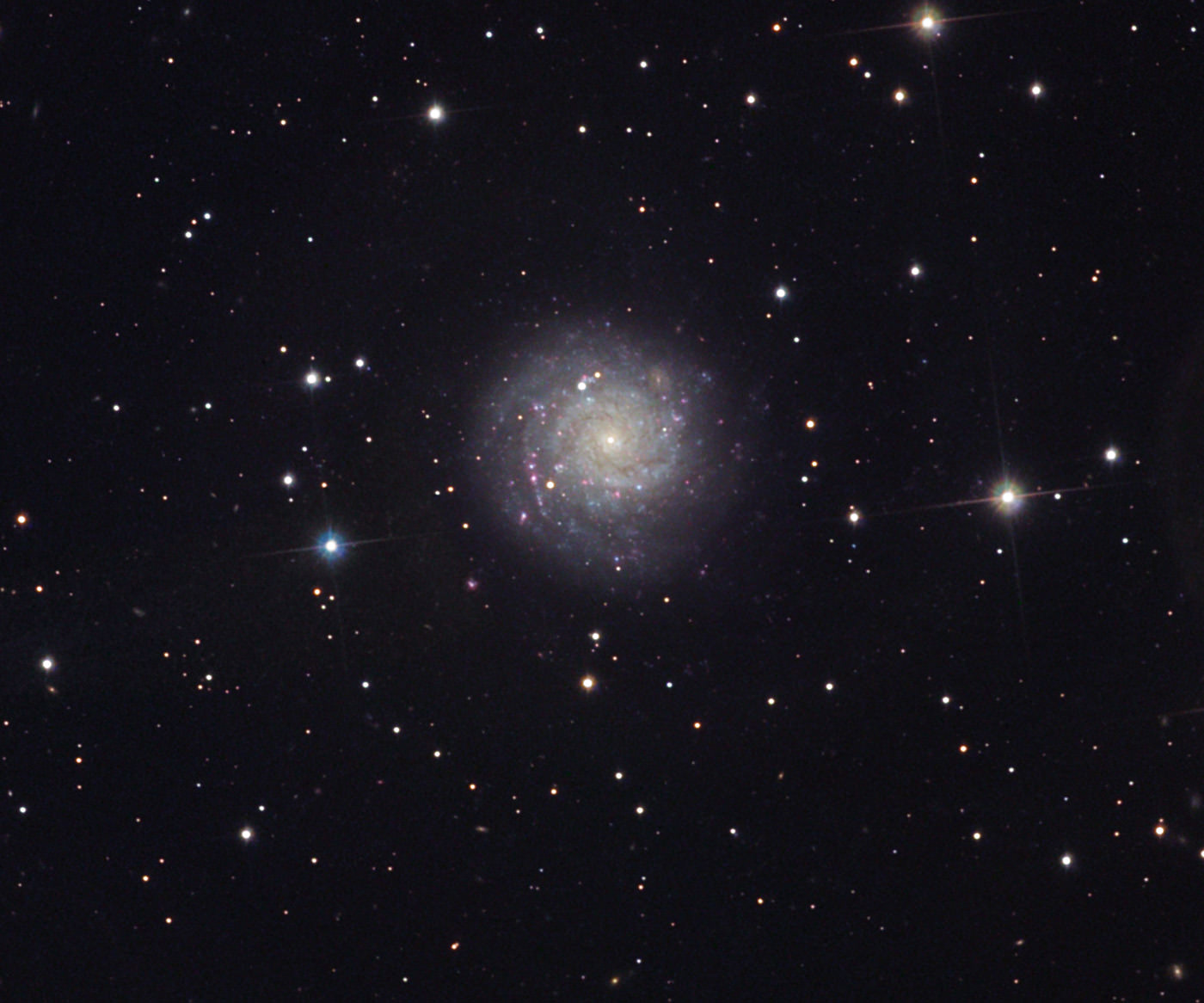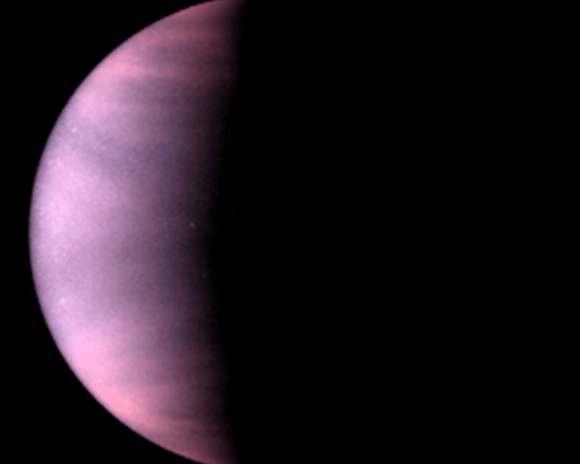When he was first compiling his famous star catalogue in the year 129 BCE the Greek astronomer Hipparchus noticed that the positions of the stars did not match up with the Babylonian measurements that he was consulting. According to these Chaldean records, the stars had shifted in a rather systematic way, which indicated to Hipparchus that it was not the stars themselves that had moved but the frame of reference – i.e. the Earth itself.
Such a motion is called precession and consists of a cyclic wobbling in the orientation of Earth’s axis of rotation. Currently, this annual motion is about 50.3 seconds of arc per year or 1 degree every 71.6 years. The process is slow, but cumulative, and takes 25,772 years for a full precession to occur. This has historically been referred to as the Precession of the Equinoxes.
The name arises from the fact that during a precession, the equinoxes could be seen moving westward along the ecliptic relative to the stars that were believed to be “fixed” in place – that is, motionless from the perspective of astronomers – and opposite to the motion of the Sun along the ecliptic.
This precession is often referred to as a Platonic Year in astrological circles because of Plato’s recorded remark in the dialogue of Timaeus that a perfect year could be defined as the return of the celestial bodies (planets) and the fixed stars to their original positions in the night sky. However, it was Hipparchus who is first credited with observing this phenomenon, according to Greek astronomer Ptolemy whose own work was in part attributed to him.
The precession of the Earth’s axis has a number of noticeable effects. First of all , the positions of the south and north celestial poles appear to move in circles against the backdrop of stars, completing one cycle every 25, 772 years. Thus, while today the star Polaris lies approximately at the north celestial pole, this will change over time, and other stars will become the “north star”. Second, the position of the Earth in its orbit around the Sun during the solstices, equinoxes, or other seasonal times slowly changes.
The cause of this was first discussed by Sir Isaac Newton in his Philosophiae Naturalis Principia Mathematica where he described it as a consequence of gravitation. Though his equations were not exact, they have since been revised by scientists and his original theory proven correct.
It is now known that precessions are caused by the gravitational source of the Sun and Moon, in addition to the fact that the Earth is a spheroid and not a perfect sphere, meaning that when tilted, the Sun’s gravitational pull is stronger on the portion that is tilted towards it, thus creating a torque effect on the planet. If the Earth were a perfect sphere, there would be no precession.
Today, the term is still widely used, but generally in astrological circles and not within scientific contexts.
We have written many articles about the equinox for Universe Today. Here’s an article about the astronomical perspective of climate change, and here’s an article about the Vernal Equinox.
If you’d like more info on Earth, check out NASA’s Solar System Exploration Guide on Earth. And here’s a link to NASA’s Earth Observatory.
We’ve also recorded an episode of Astronomy Cast all about Gravity. Listen here, Episode 102: Gravity.
Sources:
http://en.wikipedia.org/wiki/Axial_precession_%28astronomy%29
http://en.wikipedia.org/wiki/Chaldea
http://en.wikipedia.org/wiki/Ecliptic
http://en.wikipedia.org/wiki/Great_year
http://www.crystalinks.com/precession.html
http://en.wikipedia.org/wiki/Isaac_Newton
Reference:
NASA: Precession

